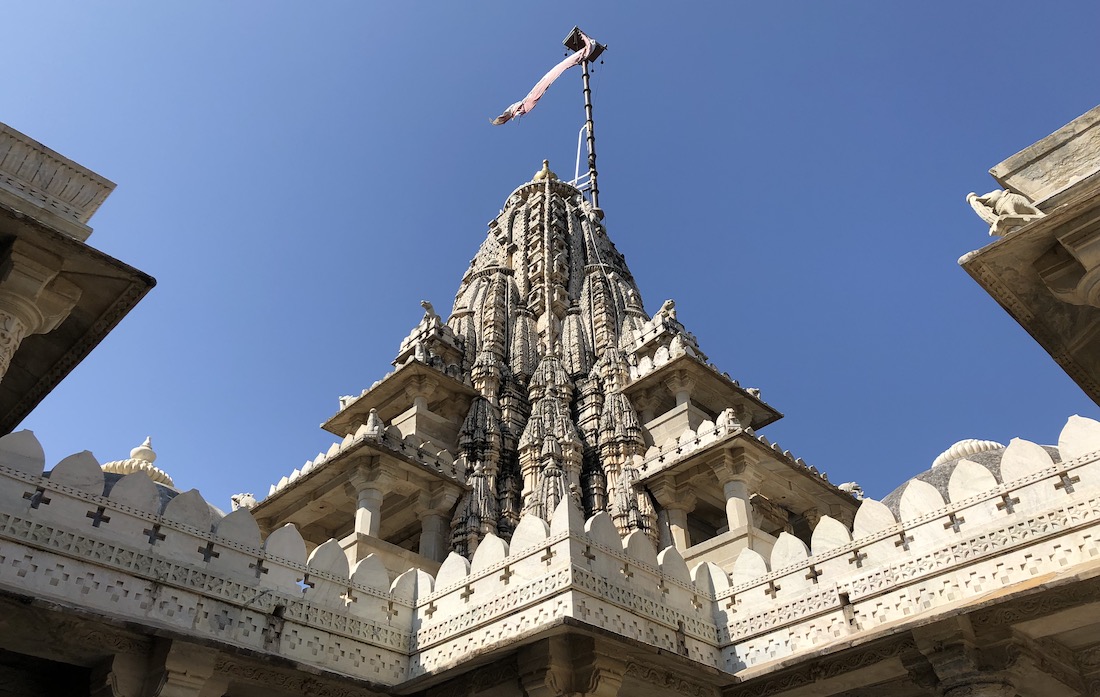It goes without saying that India is vast. Travelling from one city to another involves hours and hours of travel, with lots of hassle thrown in. By the time we’d settled into our second week we’d travelled by plane and train, so it was time for the automobile to take a bow.
Hiring a driver to get around the country is a popular option; it’s convenient and cheap and any driver worth their salt will stop somewhere en route if you want them to. We’d booked a car to take us from Jodhpur to Udaipur, largely because there’s no easy way of doing it by train, and we opted to break our journey at the gleaming white marble Jain temple at Ranakpur. The five-hour trek to Udaipur cost us about £50, a bargain compared to what we would’ve paid in Europe but somewhat over the odds for India. However, we’d booked a decent car through our haveli and I trusted that they weren’t going to pass us off with a dodgy driver and a heap on wheels. Having seen some of the wrecks that pass for vehicles on Indian roads, I was happy to pay more for something that stood at least a 90% chance of remaining intact between A and B.
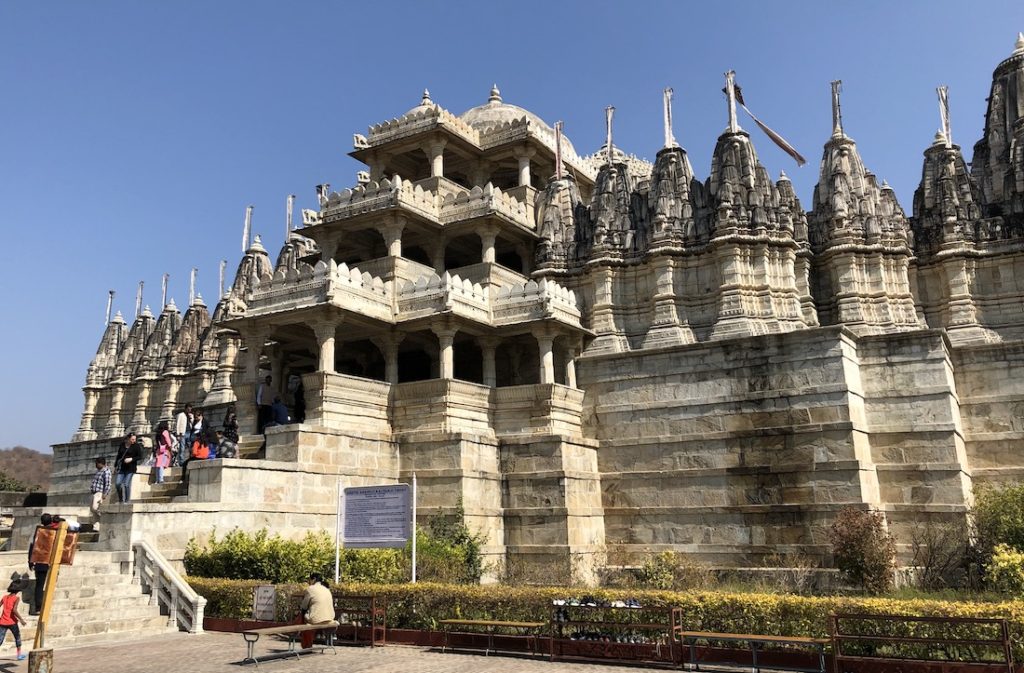
I was sad to say goodbye to Jodhpur. I’d warmed to its friendly charms and spectacular cityscape, our historic accommodation and the tasty food, but it was time to move on. We set off at a comfortable pace in the hazy light of a February morning, through the quiet if dusty suburban streets of the city, then out into the countryside. We headed south, away from the Thar Desert that stretches out towards Pakistan to the north and west. The land was arid and as flat as the eye could see, covered in low-lying scrub. To help prevent the spread of desert, young trees had been planted along stretches of the motorway – an environmental plus in a country with more than its fair share of environmental catastrophes in the making.
Gazing out of the window there wasn’t much to see other than service stations, flocks of goats, low-rent roadside hotels and the ever-present cattle. At road junctions and food stops, motorcyclists and car drivers thought nothing of driving the wrong way down the carriageway as a short-cut, unnervingly defying traffic hurtling towards them at motorway speed. Slow-moving, colourfully decorated lorries hogged the fast lane and swerved between others with little regard for their fellow road users, and later in the trip we passed one that had toppled over into a ditch. Our driver needed nerves of steel and eyes in the back of his head to master the road and I was more than grateful that he wasn’t a man to take risks.
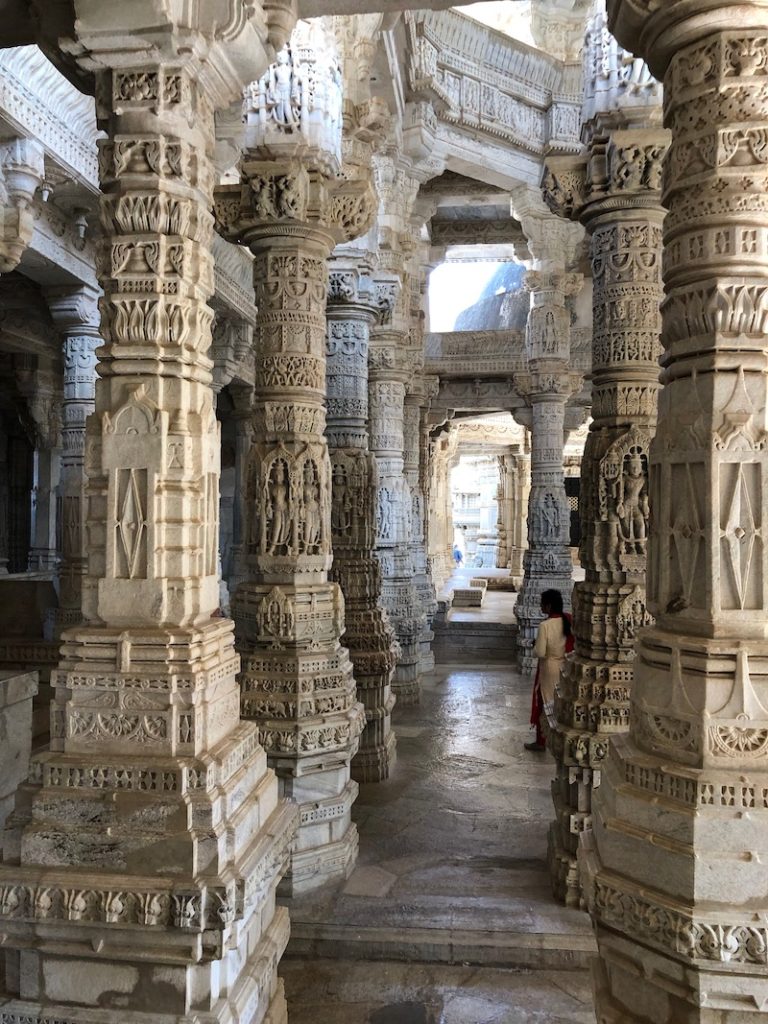
Further south the landscape began to throw up isolated hills, which looked like bubbly clouds from afar but are likely the remnants of ancient volcanic eruptions. Outside the city of Pali we crossed a river lined by industrial complexes that belched brown clouds into the blue skies.
We turned off the motorway not long after, taking the local road down to Ranakpur, through towns and villages, some of which looked desperately poor, threatened by waves of litter and caked in thick layers of dust. Animals shared the streets with people, motorbikes and tuk tuks, but a stray dog had been run over and its remains had been left splattered over the tarmac. Beyond the villages several diversions had been put in place to make way for bridge repairs, taking us off piste into and through dry river beds that shook the car’s rivets and my bones to distraction. At least we were leaving the dull, flat landscapes behind, the road winding into gentle hills. And it was nestled among those hills, amid lush forests and manicured grounds, that we came across the Jain temple of Ranakpur, a huge white marble confection with mind-blowing carvings and sculptures, one of the largest of its kind in India.
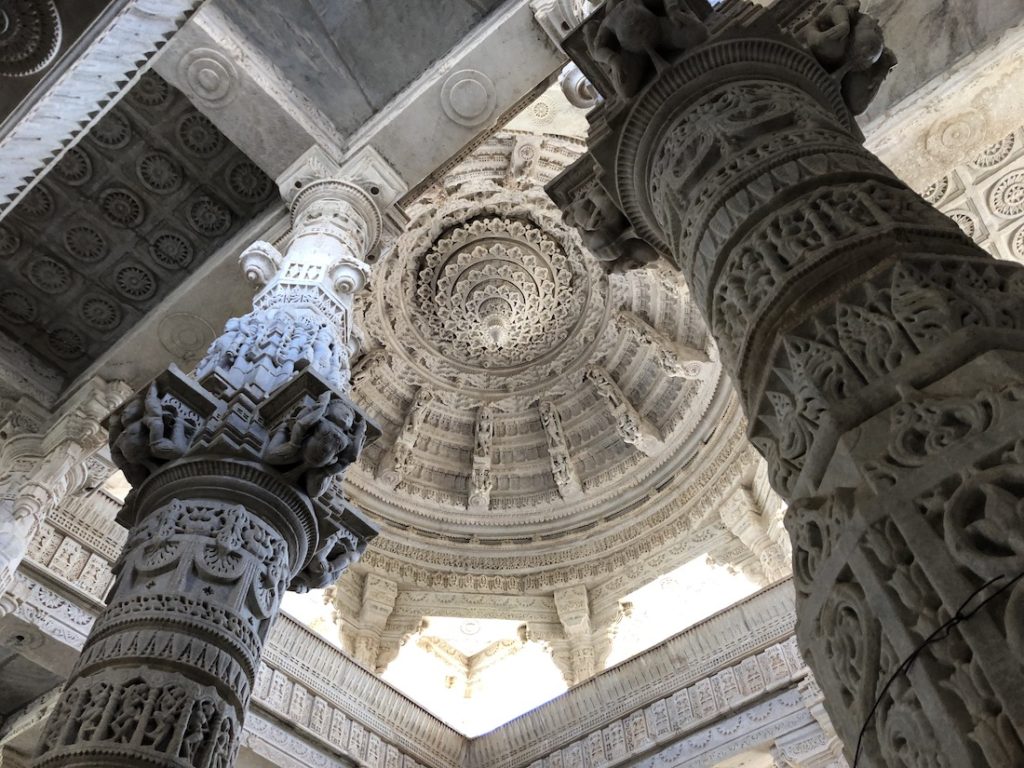
Despite being in the middle of nowhere, the temple is a busy, well-oiled tourism machine with lots of facilities and visitors, which doesn’t quite chime with what Jainism is all about. It’s one of India’s oldest religions and its followers are among the fiercest of ascetics. It doesn’t sound like much fun with its strict rules on what its followers can eat and drink, its encouragement of body mortification and discouragement of most of the things I enjoy in life. I respect them and their beliefs but, frankly, life’s too short.
To enter the temple we had to abide by a long list of rules and regulations, which included removing anything leather (with a tremendous sense of guilt I forgot that I was wearing a belt). Even menstruating women were asked not to enter, which seemed a bit harsh.
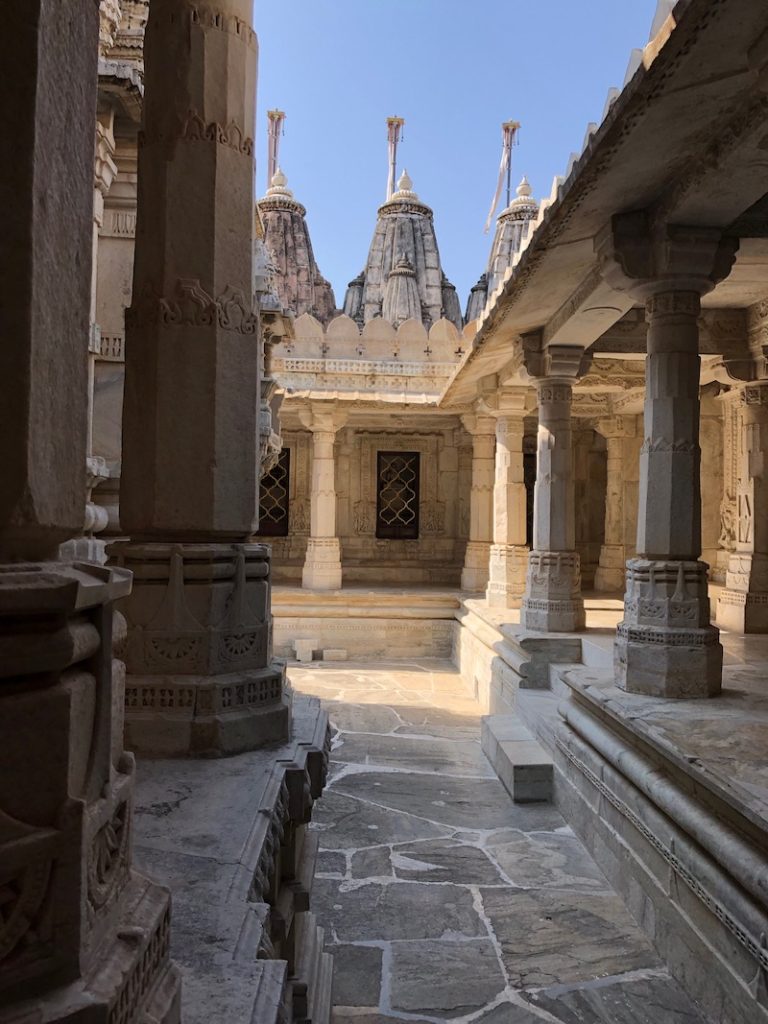
The temple was built in the 15th century and was home to monks for several centuries, but invasion and rebellion left it damaged and deserted for long periods of time. Work finally began in the early 20th century to restore it to its former glory and a very good job the artisans did too.
We walked into something unlike anywhere I’ve ever been. The temple has about 24 pillared halls, 80 domes, a prayer hall with two handsome bells and more than 1,400 marble pillars, all of which sport the most exceptional carving. It’s said that none of the pillars are the same, although how anyone would ever be able to prove it is worth pondering. I wandered around trying to absorb the magnificence of it all, largely ignoring the audio guide because it’s terribly ponderous and overblown. Perhaps not surprisingly we got collared by someone who said a prayer for us and then demanded financial compensation. Unsatisfied with the amount offered, he was either a scammer or a follower of Jainism with questionable morals.
The grounds are punctuated by several other temple structures but I couldn’t imagine any of them being remotely close to the main attraction so we took one last look, collected our shoes and found our driver. We had more than 100 kms still to go to.
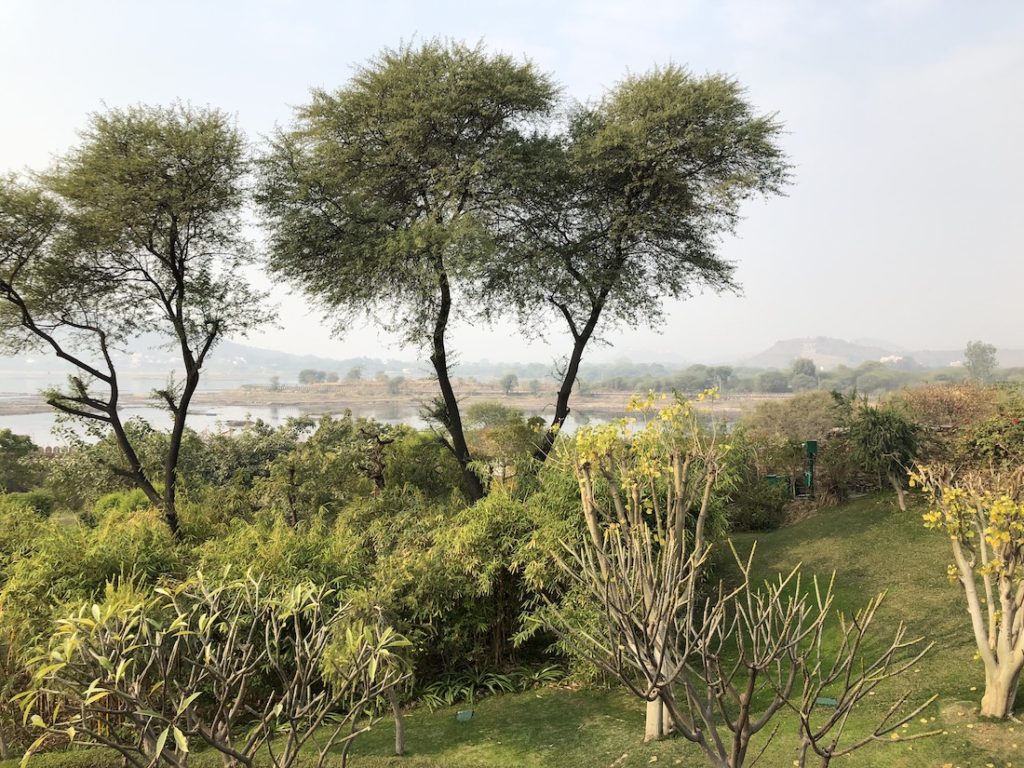
The narrow road south took us high up into the hills of the Aravalli Range, through woodland and a nature reserve. Monkeys sat arrogantly in the road munching on their lunch, oblivious to the danger of passing cars and coaches. The higher we climbed, the steeper the drop to the valleys below and the more nervous I became of the vehicles heading towards us. I had dreadful visions of a collision and the car plunging hundreds of feet into the abyss but the views were majestic and a useful distraction. It was a landscape I hadn’t expected after the flat terrain to the north. In the valleys, locals had created small terraced fields to grow their crops and some were using traditional Persian wheel wells powered by bullocks to lift precious water from the deep. Women in colourful saris went out about their tasks in the fields, using tools that haven’t changed in centuries.
Udaipur appeared between the hills late in the afternoon, another sprawling city full of life, colour, trade and traffic. Its historic old town may be one of India’s jewels but its suburbs are much like any other Indian city, although notably much less scarred by the piles of litter we found in Agra and Delhi. Our hotel, the Trident, was nestled in beautiful grounds beyond the city centre with fine views over Lake Pichola. We settled into our room, ready to start the final leg of our Indian holiday…

